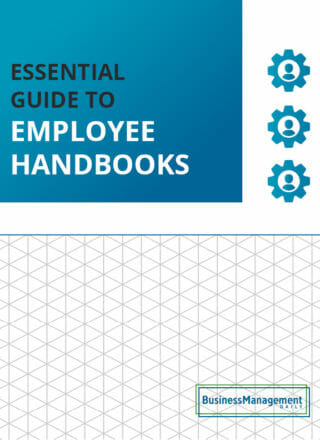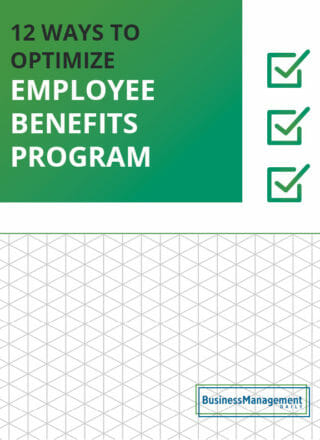How to use Waterfall project management to improve your efficiency
From chaos to control: The power of waterfall
Project management isn’t just a skill for project managers; more and more positions are expected to implement these practices daily. However, there are many styles of project management to choose from, depending on the needs of the specific project. One common style is Waterfall project management.
Waterfall project management involves a laid-out process followed from start to finish. In this style, each task is finished before the next task begins.
While less flexible than some methods, Waterfall project management works great for projects with multiple steps but fewer variables.
For example, think of a production line—one part needs to be completed before it can be attached to the next one. However, this method doesn’t only apply to a production line.
Many tasks and processes follow a similar path, and by applying these methods, you can easily control an unwieldy project.
Project kick-off
Let’s say that you’re responsible for ensuring the annual budget update process goes smoothly and that each department updates its numbers and submits the right forms in time.
First, you’ll want to have a project kick-off. Here, you need to identify key information, such as all the stakeholders involved, any specific deadlines that must be met, and the necessary steps that must be completed.
Your kick-off should be thorough; after all, you want to craft a plan that you can adhere to from conception to completion.
Outline each phase
Now, you should outline each phase. In this example, most initial tasks must be completed before the next one can happen. So, let’s think about what that might look like.
- Update last year’s forms.
- Draft budget update process guidelines.
- Send an email to each department head with the form and process guidelines.
- Leads fill out and submit forms.
- Review submitted forms for accuracy.
- Work with department leads to correct any errors, if applicable.
- Submit completed forms to the supervisor for review. – Due 5/18
You can track more specific details under each main bullet. That’s fine, as long as each task can only be done after the preceding task is complete. For example, bullet 2 may look like this:
-
Update last year’s forms.
- Update dates and titles on existing forms.
- Have supervisor review.
- Make any changes.
- Get sign-off from the finance department.
- Update dates and titles on existing forms.
In this case, each sub-task needs to be done in order before the overarching task can be checked off. While you don’t want to be too granular, documenting every tiny aspect should be as detailed as applicable.
This is your working document, so it should include a level of detail that will help you and your colleagues keep track of the project’s progress.
Assign deadlines
There are two ways of approaching this. You can either work backward or forward.
To work backward, you have your end date in mind. In this example, it’s 5/18. Let’s say today is 4/18, leaving you 30 days to complete the task. You now know what time you have to work with and can start filling in the dates for each task along the way.
So we’ll assume you want to leave at least a week to review the submitted forms and work with department leads to correct errors. That means department leads need to have their forms submitted by 5/11.
Assuming you want to give them 2 weeks to fill everything out, that means you need to send the forms to them in late April. This process lets you determine how much time is available for each step to ensure you meet the target date.
Generally, it’s advisable to leave some buffer time — if 5/18 is the due date, aim to have everything finished a few days before in case something takes longer than expected.
To work forward, you’ll have to do a bit more estimation. If you don’t have a specific or particularly tight due date, then you can look at each task and estimate the time it will take to complete it. This way, you’ll eventually end up with a completion date for the project.
In some cases, you may need to do both. If, after working backward, you realize you should have started 2 weeks ago, then you’ll need to look forward a bit and identify where there’s room to shorten the time allotted to some tasks.
Alternatively, if you feel the timeline isn’t attainable, this detailed outline will be an excellent resource for your supervisor to discuss extending the deadline.
Track the project
Keep a document where you track the project’s progress. You could choose to use a more sophisticated project management program like Asana or build an Excel sheet or even a Word document. Generally, you want to include each task, its due date, a progress update (not started, in progress, complete), and room for any comments.
Additionally, your project tracker should exist in a shared space. This allows others to check on the project’s status without needing to contact you directly.
It’s possible that deadlines may change or new tasks may come up. That’s okay, but be sure to update your project plan and dates to reflect that.
Generally, Waterfall project management isn’t ideal for projects with many variables, but a few small changes here and there shouldn’t derail a whole project.
Review the project plan afterward
As with any task, you’ll want to review how the project went afterward. Did you stick to the plan? Did you have to make many changes? What went well? What went poorly? Ask yourself and others involved questions to get a feel for what worked well and what didn’t.
If this project recurs every year, then you want to make notes to improve the process next year. Even if it isn’t, you still may find valuable insights that you can use to improve upon other future projects.
Additional resources:
How to apply Agile project management principles to your work ![]()
Sample scrum master job description and interview questions ![]()
Workplace etiquette: The ultimate guide to professionalism ![]()






